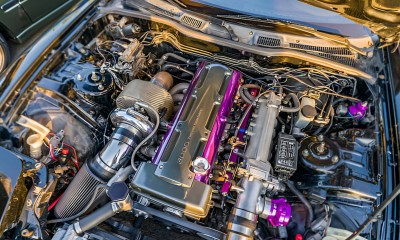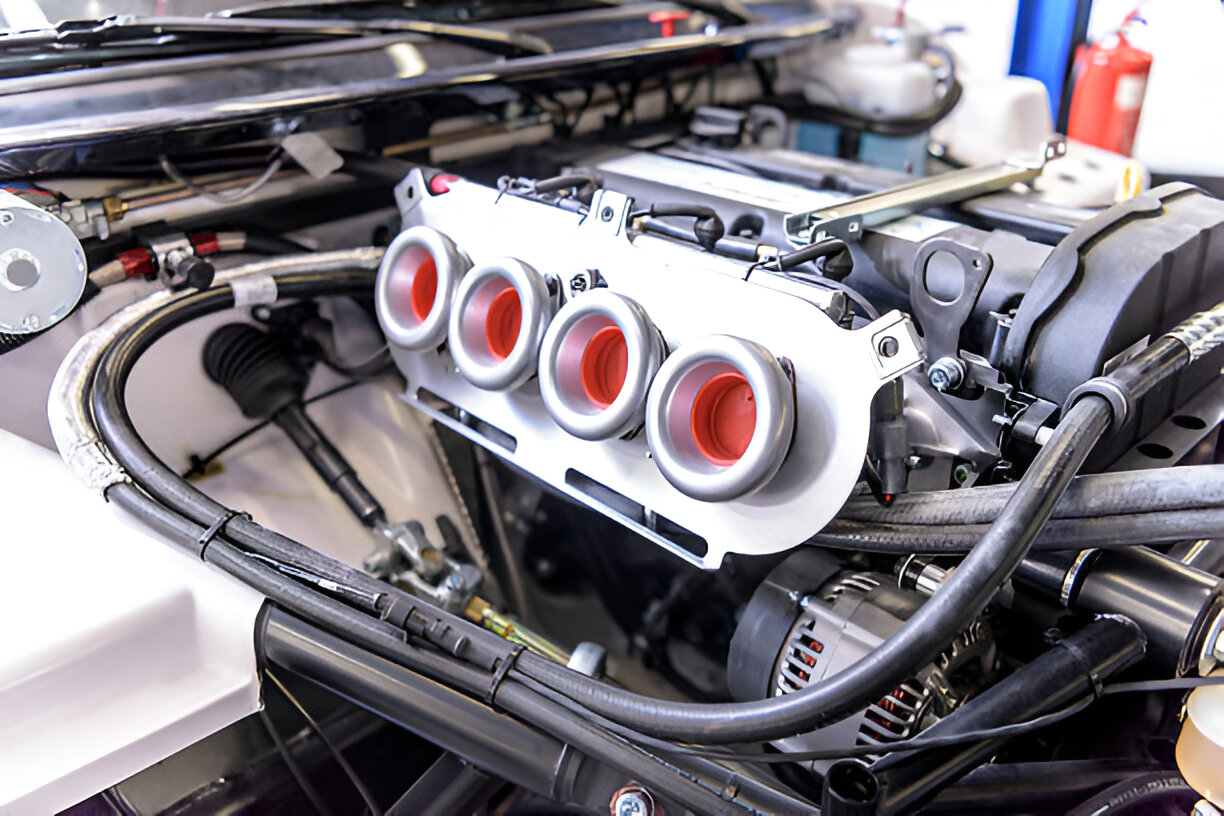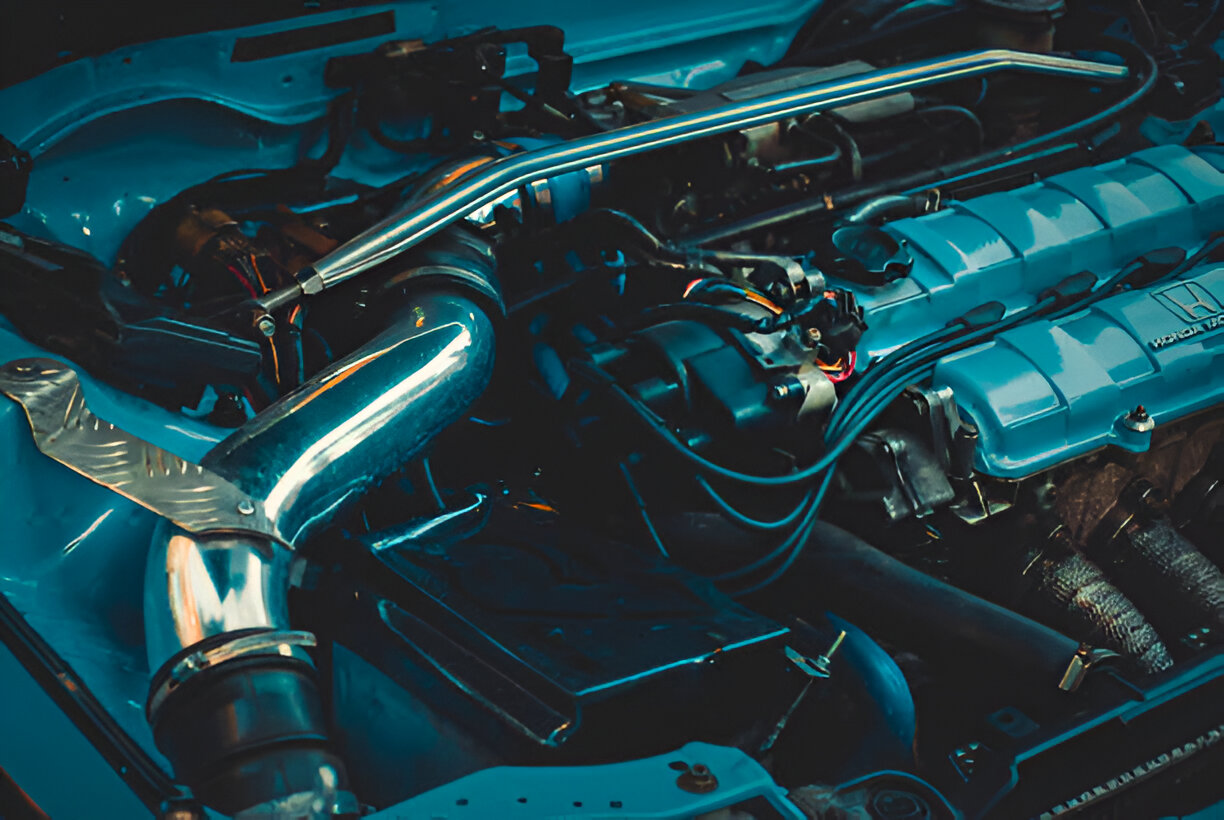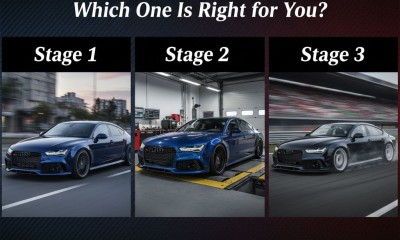Stage 1, Stage 2, and Stage 3 ECU Tuning: The Complete Performance Guide for Modern Vehicles

When it comes to extracting maximum performance from your vehicle, understanding the different stages of ECU tuning is crucial for making informed decisions. Whether you're a daily commuter looking for improved fuel efficiency or a weekend warrior seeking track-ready performance, the world of performance tuning offers three distinct pathways: Stage 1, Stage 2, and Stage 3 modifications.
At HP Chiptuningfiles, we've been helping automotive enthusiasts unlock their vehicles' hidden potential for over 17 years. With more than 4,000 satisfied clients worldwide, our expertise spans across gasoline, hybrid, and diesel engines, delivering custom dyno-tested files that maximize performance while maintaining reliability.
The confusion surrounding tuning stages often stems from inconsistent industry definitions and marketing terminology. This comprehensive guide will demystify Stage 1, Stage 2, and Stage 3 tuning, helping you understand exactly what each stage entails, what results you can expect, and which approach best suits your performance goals and budget.
Understanding Modern ECU Tuning: The Foundation of Performance
Before diving into the specific stages, it's essential to understand what ECU tuning actually accomplishes. Your vehicle's Engine Control Unit (ECU) serves as the brain of your engine, managing thousands of parameters including fuel injection timing, ignition advance, boost pressure (in turbocharged applications), air-fuel ratios, and emissions control systems.
Modern vehicles are equipped with sophisticated ECUs that continuously adapt to driving conditions, fuel quality, and environmental factors. However, these factory calibrations are intentionally conservative to ensure reliability across diverse operating conditions, varying fuel qualities worldwide, and to meet stringent emissions regulations.
Professional ECU tuning optimizes these parameters to extract maximum performance from your engine's existing hardware. The process involves carefully modifying the engine's software maps to unlock power that manufacturers deliberately leave on the table for various commercial and regulatory reasons.
The beauty of modern ECU tuning lies in its reversibility and customization potential. Unlike mechanical modifications that permanently alter your vehicle, ECU tuning can be adjusted, refined, or completely reversed to stock specifications. This flexibility makes it an attractive starting point for performance enthusiasts.
Stage 1 ECU Tuning: Maximizing Stock Hardware Potential
Stage 1 tuning represents the purest form of ECU modification, focusing exclusively on software optimization without requiring any physical hardware changes. This approach leverages the inherent conservatism built into factory ECU calibrations to unlock significant performance improvements.
What Defines Stage 1 Tuning?
Stage 1 tuning works entirely within the constraints of your vehicle's original equipment. No parts are replaced, modified, or upgraded – the transformation is purely digital. This approach maximizes what your engine can safely produce using its existing turbocharger, fuel injectors, exhaust system, and intake components.
The magic of Stage 1 tuning lies in optimizing parameters that manufacturers set conservatively:
Ignition Timing Optimization: Factory ignition timing is often retarded to accommodate lower octane fuels and varying environmental conditions. Stage 1 tuning advances timing to optimal levels for premium fuel, extracting additional power from each combustion cycle.
Fuel Delivery Refinement: Stock fuel maps frequently run richer than necessary for maximum power output. Professional tuning leans out these maps where safe, improving both power and fuel economy.
Boost Pressure Adjustments: Turbocharged engines typically have significant headroom in their boost maps. Stage 1 tuning safely increases boost pressure within hardware limitations, dramatically improving power output.
Throttle Response Enhancement: Factory throttle mapping often includes intentional delays and smoothing algorithms. Stage 1 tuning sharpens throttle response, making the vehicle feel more immediate and engaging.
Performance Expectations from Stage 1 Tuning
The power gains from Stage 1 tuning vary significantly based on your vehicle's platform, but certain patterns emerge across different engine types:
Turbocharged Gasoline Engines:
-
Small displacement turbo engines (1.4L-2.0L): 25-45 horsepower and 40-70 lb-ft torque gains
-
Mid-size turbo engines (2.5L-3.5L): 35-65 horsepower and 50-90 lb-ft torque gains
-
Large displacement turbo engines (4.0L+): 50-80 horsepower and 70-120 lb-ft torque gains
Naturally Aspirated Engines:
-
4-cylinder engines: 10-25 horsepower and 15-30 lb-ft torque gains
-
V6 engines: 18-35 horsepower and 20-40 lb-ft torque gains
-
V8 engines: 25-50 horsepower and 30-60 lb-ft torque gains
Turbocharged Diesel Engines:
-
Light-duty diesel (2.0L-3.0L): 30-60 horsepower and 60-120 lb-ft torque gains
-
Heavy-duty diesel (3.0L+): 50-100 horsepower and 100-200 lb-ft torque gains
Real-World Benefits Beyond Raw Numbers
While horsepower and torque figures grab headlines, Stage 1 tuning delivers numerous benefits that enhance the overall driving experience:
Improved Fuel Economy: Contrary to popular belief, properly executed Stage 1 tuning often improves fuel economy by 5-15% under normal driving conditions. This occurs because the engine operates more efficiently, requiring less throttle input to maintain desired speeds.
Enhanced Drivability: Stage 1 tuning eliminates factory programming quirks like throttle lag, gear hunting in automatic transmissions, and artificial power restrictions in certain RPM ranges. The result is smoother, more predictable power delivery.
Reduced Turbo Lag: Turbocharged engines benefit from optimized boost control strategies that spool the turbocharger more quickly and maintain boost pressure more effectively across the RPM range.
Temperature Management: Professional Stage 1 tunes include improved cooling fan strategies and more aggressive timing retard under extreme conditions, often resulting in lower operating temperatures than stock calibrations.
Stage 1 Tuning Investment Considerations
Stage 1 tuning offers exceptional value for performance-minded drivers. The typical investment ranges from €55-150 depending on the complexity of your vehicle's ECU and the comprehensiveness of the tuning package. When compared to hardware modifications that might yield similar power gains, Stage 1 tuning provides unmatched cost-effectiveness.
Our Stage 1 tuning files are developed through extensive dyno testing and real-world validation. Each file is customized for your specific vehicle, ensuring optimal results while maintaining complete reliability and often improving fuel economy.
Stage 2 ECU Tuning: Hardware-Supported Performance Enhancement
Stage 2 tuning represents the natural evolution from Stage 1, incorporating carefully selected hardware modifications that address the primary bottlenecks limiting Stage 1 performance gains. This approach creates synergy between optimized ECU calibration and improved hardware components.
Understanding Stage 2 Modification Philosophy
Stage 2 tuning recognizes that ECU optimization alone can only extract so much performance from stock hardware. By addressing key restriction points in the intake and exhaust systems, Stage 2 modifications allow the ECU tune to be more aggressive while maintaining reliability margins.
The hardware modifications typical of Stage 2 setups focus on improving airflow efficiency:
High-Flow Air Intake Systems: Stock airboxes and intake tubes often restrict airflow, especially at higher RPMs. Stage 2 intake systems feature larger diameter tubing, high-flow air filters, and smoother airflow paths. These modifications reduce intake restriction and lower intake air temperatures.
Performance Exhaust Systems: Factory exhaust systems prioritize noise control and cost reduction over flow efficiency. Stage 2 exhaust modifications include high-flow catalytic converters, performance downpipes (turbo applications), and cat-back exhaust systems with larger diameter piping and fewer restrictive mufflers.
Intercooler Upgrades (Turbocharged Applications): Stock intercoolers are often undersized for improved performance applications. Upgraded intercoolers feature larger core volumes and more efficient heat exchanging designs, reducing intake air temperatures and supporting consistent power output.
Intake Manifold Modifications: Some platforms benefit from intake manifold spacers, porting, or complete manifold upgrades that improve airflow distribution and reduce restriction.
Stage 2 Performance Gains and Characteristics
Stage 2 modifications typically yield 30-60% more power than Stage 1 tuning alone, with gains varying based on platform and specific modifications:
Turbocharged Engine Stage 2 Gains:
-
Compact turbo engines: 40-70 horsepower over Stage 1
-
Mid-size turbo engines: 50-90 horsepower over Stage 1
-
Large turbo engines: 70-120 horsepower over Stage 1
Naturally Aspirated Engine Stage 2 Gains:
-
4-cylinder engines: 15-30 horsepower over Stage 1
-
V6 engines: 20-40 horsepower over Stage 1
-
V8 engines: 25-50 horsepower over Stage 1
The Stage 2 Driving Experience
Stage 2 tuning transforms your vehicle's character beyond simple power increases. The combination of improved airflow and optimized ECU calibration creates a more responsive, engaging driving experience:
Linear Power Delivery: Stage 2 modifications often result in smoother power curves with less abrupt turbo spooling or torque peaks. This creates more predictable acceleration and improved drivability.
Enhanced Sound Character: Performance exhaust systems and intake modifications change your vehicle's acoustic signature. While some enjoy the more aggressive sound, others may find it too prominent for daily driving.
Improved Heat Management: Better airflow through the engine bay and more efficient intercooling result in lower operating temperatures and more consistent performance during extended spirited driving.
Stage 2 Investment and Considerations
Stage 2 modifications require a more substantial financial commitment, typically ranging from €800-2,500 depending on the specific platform and chosen components. The investment includes both hardware costs and professional installation, plus custom Stage 2 tuning files developed specifically for your modification combination.
Important considerations for Stage 2 tuning include:
Maintenance Requirements: Performance air filters require regular cleaning, and some exhaust modifications may require periodic maintenance to maintain optimal function.
Sound Levels: Exhaust modifications will change your vehicle's sound profile. Research local noise regulations and consider your comfort with increased exhaust noise.
Fuel Requirements: Stage 2 tuning often requires premium fuel for optimal performance, though many tunes include multiple maps for different octane levels.
Visual Modifications: Some Stage 2 components like cold air intakes or exhaust tips are visible, potentially affecting your vehicle's appearance or drawing unwanted attention.
Stage 3 ECU Tuning: Maximum Performance Engineering
Stage 3 tuning represents the pinnacle of bolt-on performance modifications, pushing engines to their maximum safe operating limits through comprehensive hardware upgrades and aggressive ECU calibration. This level of modification is typically reserved for dedicated enthusiasts who prioritize performance above all other considerations.
Stage 3 Modification Scope and Philosophy
Stage 3 tuning acknowledges that extracting maximum performance requires addressing multiple bottlenecks simultaneously. These modifications often approach or exceed the safe operating limits of stock engine internals, requiring careful consideration of reliability trade-offs.
Typical Stage 3 modifications include:
Turbocharger Upgrades: Larger, more efficient turbochargers capable of producing higher boost pressures and flowing more air. These upgrades often require custom piping, upgraded waste gates, and blow-off valve modifications.
Comprehensive Fuel System Upgrades: High-flow fuel injectors, upgraded fuel pumps, and sometimes auxiliary fuel systems to support the dramatically increased fuel demands of Stage 3 power levels.
Advanced Engine Management: Many Stage 3 builds require standalone engine management systems or heavily modified factory ECUs to handle the complexity of the modifications and provide necessary safety features.
Supporting Component Upgrades: Upgraded intercoolers, oil cooling systems, transmission cooling, and often clutch or torque converter upgrades to handle the increased power output.
Internal Engine Modifications: Some Stage 3 builds require forged pistons, connecting rods, head studs, or other internal engine components to safely handle the increased power and stress.
Stage 3 Performance Expectations
Stage 3 modifications can double or even triple your vehicle's original power output, but the exact gains depend heavily on the platform and modification extent:
Turbocharged Engine Stage 3 Potential:
-
Compact turbo engines: 200-400% power increases possible
-
Mid-size turbo engines: 150-300% power increases typical
-
Large turbo engines: 100-200% power increases common
Naturally Aspirated Engine Stage 3 Approaches:
-
Forced induction conversion: 80-150% power increases
-
High-compression naturally aspirated builds: 40-80% power increases
-
Exotic fuel systems (E85, race gas): 60-120% power increases
Stage 3 Lifestyle and Usage Considerations
Stage 3 tuning fundamentally changes your relationship with your vehicle. These modifications create capabilities that often exceed what's practical or legal for street use:
Track-Focused Performance: Stage 3 vehicles excel in controlled environments where their full potential can be safely explored. Many owners trailer their Stage 3 vehicles to track events rather than driving them on public roads.
Maintenance Intensity: Stage 3 modifications require significantly more maintenance than lower stages. Components operate closer to their limits, oil changes become more critical, and specialty maintenance procedures may be necessary.
Fuel Requirements: Stage 3 builds often require race fuel, E85, or other specialty fuels to achieve their full potential. This can significantly increase operating costs and limit where you can refuel.
Legal and Insurance Considerations: Many Stage 3 modifications may not be street legal in certain jurisdictions. Insurance companies may also have concerns about heavily modified vehicles.
The Economics of Stage 3 Tuning
Stage 3 modifications represent a substantial investment, often ranging from €3,000-15,000 or more depending on the platform and modification extent. This investment includes:
-
Major hardware components (turbocharger, fuel system, engine management)
-
Professional installation and fabrication work
-
Supporting modifications (cooling, drivetrain, suspension)
-
Ongoing maintenance and consumables
The cost per horsepower at Stage 3 levels is typically much higher than Stage 1 or Stage 2 modifications, making it important to carefully consider your performance goals and budget.
Choosing the Right Tuning Stage for Your Needs
Selecting the appropriate tuning stage requires honest assessment of your performance goals, budget, intended use, and tolerance for complexity. Each stage serves different types of enthusiasts and use cases.
Stage 1: The Practical Performance Choice
Stage 1 tuning is ideal for drivers who want meaningful performance improvements without lifestyle changes or significant additional complexity. This approach suits:
Daily Drivers: Stage 1 modifications maintain complete reliability and often improve fuel economy, making them perfect for vehicles used for daily commuting and family transportation.
Budget-Conscious Enthusiasts: The exceptional cost-effectiveness of Stage 1 tuning makes it accessible to enthusiasts working with limited budgets who still want substantial performance improvements.
Lease Vehicles: The reversible nature of ECU tuning makes Stage 1 modifications attractive for leased vehicles, though lease agreements should be carefully reviewed.
First-Time Tuners: Stage 1 provides an excellent introduction to performance modification with minimal risk and complexity.
Stage 2: The Balanced Enthusiast Approach
Stage 2 tuning appeals to drivers who want more substantial performance gains and don't mind some additional complexity and cost:
Weekend Warriors: Drivers who enjoy spirited weekend driving but still need daily drivability will appreciate Stage 2's performance-comfort balance.
Autocross and Track Day Participants: Stage 2 modifications provide competitive performance improvements for grassroots motorsports while maintaining street drivability.
Sound Enhancement Seekers: Enthusiasts who want their vehicle to sound more aggressive will enjoy the acoustic changes that come with Stage 2 exhaust modifications.
Progressive Modifiers: Stage 2 serves as a natural stepping stone for enthusiasts who may eventually pursue Stage 3 modifications.
Stage 3: The Ultimate Performance Statement
Stage 3 tuning is reserved for serious performance enthusiasts who prioritize maximum power over practicality:
Track-Focused Builds: Vehicles primarily used for track days, time attack events, or drag racing benefit from Stage 3's uncompromising performance focus.
Show Car Projects: Some enthusiasts pursue Stage 3 modifications for the prestige and attention that come with extreme performance builds.
Racing Applications: Competitive motorsports often require Stage 3-level modifications to remain competitive in various racing series.
Technical Enthusiasts: Some drivers enjoy the complexity and technical challenge of maintaining and optimizing Stage 3 vehicles.
Platform-Specific Tuning Considerations
Different vehicle platforms respond uniquely to various tuning stages, and understanding your specific engine's characteristics is crucial for setting realistic expectations and choosing appropriate modifications.
European Turbocharged Engines
European manufacturers like BMW, Audi, Mercedes-Benz, and Volkswagen typically equip their vehicles with conservatively tuned turbocharged engines that respond exceptionally well to all tuning stages:
German Turbo 4-Cylinders (2.0T variants): These engines often produce 200-250 HP stock but can achieve 300+ HP with Stage 2 modifications and professional tuning. Our Mercedes-Benz ECU tuning solutions demonstrate the potential of these platforms.
European V6 Turbos: Engines like the Audi 3.0T or BMW B58 can achieve 400-500+ HP with Stage 3 modifications while maintaining reasonable reliability.
European Diesel Engines: Modern European diesels are particularly responsive to tuning, often showing 30-50% power and torque increases with Stage 1 modifications alone.
Japanese Performance Engines
Japanese manufacturers have produced numerous legendary performance engines that respond well to modification:
Honda VTEC Engines: Naturally aspirated Honda engines benefit most from Stage 2+ modifications that complement their high-revving characteristics.
Subaru Boxer Engines: The FA20/EJ25 engines in WRX and STI models respond well to all tuning stages but require careful attention to reliability at Stage 3 levels.
Toyota Turbo Engines: The new generation of Toyota turbo engines (like the B48 in the Supra) show excellent tuning potential across all stages.
American V8 Platforms
American V8 engines offer unique tuning characteristics:
LS-Based Engines: GM's LS family responds exceptionally well to Stage 1 and Stage 2 modifications, with forced induction conversions creating incredible Stage 3 potential.
Coyote Ford Engines: The 5.0L Coyote V8 in Mustangs benefits from all tuning stages, with supercharger conversions creating dramatic Stage 3 results.
Chrysler Hemi Engines: As detailed in our previous content, Hemi engines show excellent response to tuning across all stages.
The Technology Behind Professional ECU Tuning
Understanding the technical aspects of ECU tuning helps appreciate the complexity and skill required for professional results. Modern ECU tuning involves sophisticated software and hardware tools combined with extensive experience and dyno testing.
ECU Reading and Writing Methods
Professional tuning requires accessing and modifying the ECU's software, which involves several technical approaches:
OBD-II Port Tuning: Many newer vehicles allow ECU modification through the standard diagnostic port, making the process relatively straightforward and reversible.
Boot Mode Programming: Some ECUs require opening and directly accessing the circuit board for modification. Our guide on understanding bootmode tricore ECU reading explains this process.
BDM Reading: Certain ECUs require Background Debug Mode access for modification. This process, detailed in our mastering ECU tuning via BDM reading article, requires specialized equipment and expertise.
Tuning Software and Tools
Professional ECU tuning relies on specialized software platforms:
WinOLS: Industry-standard software for ECU map identification and modification. Our team uses WinOLS extensively for developing custom calibrations.
Alientech Suite: Comprehensive tuning software that integrates with various ECU reading hardware. We maintain expertise across multiple software platforms to handle diverse vehicle applications.
Proprietary Manufacturer Tools: Some applications require manufacturer-specific diagnostic tools for optimal results.
Dyno Testing and Validation
All professional tuning should include comprehensive dyno testing to ensure safety and performance:
Power and Torque Verification: Dynamometer testing validates actual performance gains and ensures they match expectations.
Air-Fuel Ratio Monitoring: Critical for ensuring safe combustion under all operating conditions.
Exhaust Gas Temperature Monitoring: Prevents potentially damaging high temperature conditions.
Knock Detection: Advanced monitoring prevents destructive engine knock that could cause internal damage.
Our commitment to dyno-tested tuning files ensures every custom calibration meets our strict performance and safety standards.
Safety, Reliability, and Legal Considerations
Responsible tuning requires careful consideration of safety, long-term reliability, and legal compliance. Professional tuners must balance performance goals with these critical factors.
Engine Safety Margins
All professional tuning maintains appropriate safety margins to prevent engine damage:
Knock Limits: Tuning must never allow destructive engine knock under any operating condition, including varying fuel quality and environmental factors.
Temperature Management: ECU calibrations include strategies for managing excessive temperatures through timing retard and fuel enrichment.
Fuel System Limits: Tuning cannot exceed the safe operating limits of fuel injectors, fuel pumps, or fuel rail pressure systems.
Mechanical Stress Limits: Understanding the mechanical limits of engine internals ensures tuning doesn't exceed safe cylinder pressures or component stress levels.
Long-Term Reliability Considerations
Professional tuning prioritizes long-term reliability:
Conservative Calibration Approach: While maximizing performance, professional tunes maintain conservative safety margins that protect engine longevity.
Quality Component Selection: Stage 2 and Stage 3 builds benefit from quality aftermarket components that support reliability at higher performance levels.
Maintenance Schedule Adjustments: Higher performance often requires more frequent maintenance intervals to maintain reliability.
Monitoring Systems: Many Stage 3 builds benefit from aftermarket monitoring systems that alert drivers to potentially dangerous conditions.
Legal and Emissions Compliance
Tuning modifications must consider local regulations:
Emissions Compliance: Many jurisdictions require modified vehicles to maintain emissions compliance. Our tuning approach considers these requirements where applicable.
Noise Regulations: Exhaust modifications must comply with local noise ordinances to avoid legal issues.
Insurance Implications: Modified vehicles may require disclosure to insurance companies to maintain coverage validity.
Registration Requirements: Some modifications may require engineering certification or registration updates in certain regions.
Getting Started with ECU Tuning: The HP Chiptuningfiles Advantage
Choosing the right tuning partner is crucial for achieving optimal results safely and reliably. At HP Chiptuningfiles, we bring over 17 years of experience and a global client base to every tuning project.
Our Comprehensive Tuning Process
Our approach to ECU tuning ensures optimal results through systematic development and testing:
Vehicle Analysis: Every tuning project begins with comprehensive analysis of your specific vehicle, including ECU identification, current modifications, and performance goals.
Custom File Development: We develop custom tuning files specifically for your vehicle rather than using generic maps that may not optimize your specific configuration.
Dyno Testing and Validation: All tuning files undergo extensive dyno testing to verify performance gains and ensure safe operation across the operating range.
Customer Support: We provide ongoing support to ensure your tuning continues to deliver optimal results throughout your ownership experience.
Global Expertise and Accessibility
Our worldwide client base demonstrates our ability to work with diverse vehicles and regulations:
International Shipping: We serve clients in over 100 countries, providing custom tuning files regardless of location.
Diverse Platform Experience: Our experience spans European, American, Japanese, and Korean vehicle platforms across gasoline, diesel, and hybrid applications.
Multiple Communication Channels: We offer support through various channels to ensure accessible customer service regardless of time zone or location.
Quality Assurance and Reliability
Every tuning file we produce meets strict quality standards:
4x4 Dyno Testing: All files undergo comprehensive testing to ensure reliable performance across various operating conditions.
Safety Validation: Our calibrations include extensive safety checks to prevent engine damage under any foreseeable operating condition.
Performance Verification: We validate all claimed performance gains through independent dyno testing.
Ongoing Development: Our tuning files benefit from continuous refinement based on client feedback and evolving technology.
Investment Analysis: Cost vs. Benefit Across Tuning Stages
Understanding the financial implications of different tuning stages helps make informed decisions about your performance investment strategy.
Stage 1 ROI Analysis
Stage 1 tuning offers exceptional return on investment:
Initial Investment: €55-150 for professional ECU tuning Performance Gains: 10-25% power increase typical Additional Benefits: Often improved fuel economy, better drivability Cost Per Horsepower: Often under €5 per horsepower gained Reversibility: Completely reversible with no permanent modifications
Stage 2 Investment Considerations
Stage 2 modifications require larger investment but offer proportional returns:
Typical Investment: €800-2,500 including hardware and tuning Performance Gains: 20-50% total power increase over stock Enhanced Experience: Significant improvements in sound and feel Cost Per Horsepower: €15-40 per horsepower depending on platform Resale Impact: Quality modifications may improve resale value
Stage 3 Investment Reality
Stage 3 builds represent serious financial commitment:
Major Investment: €3,000-15,000+ depending on scope Maximum Performance: Often 100-300% power increases possible Specialized Application: Best suited for track or competition use Higher Operating Costs: Increased maintenance, fuel, and consumable costs Limited Practicality: May reduce everyday usability
Future of ECU Tuning: Technology Trends and Developments
The automotive industry's rapid evolution toward electrification and advanced driver assistance systems is creating new challenges and opportunities for ECU tuning.
Hybrid and Electric Vehicle Tuning
As hybrid and electric vehicles become more prevalent, tuning approaches are evolving:
Hybrid System Optimization: Modern hybrids benefit from calibration optimization that maximizes the synergy between electric motors and internal combustion engines.
Battery Management Optimization: Electric vehicle tuning often focuses on battery management strategies that improve performance and range.
Regenerative Braking Tuning: Optimizing regenerative braking systems can improve both performance and efficiency.
Advanced Driver Assistance System Integration
Modern vehicles include numerous electronic systems that interact with ECU tuning:
Traction Control Optimization: Tuning can optimize traction control systems to work effectively with increased power output.
Stability System Calibration: Electronic stability systems may require recalibration to work properly with modified powertrains.
Transmission Control Integration: Modern automatic transmissions require careful integration with engine tuning for optimal results.
Cybersecurity and Anti-Tampering Measures
Manufacturers are implementing increasingly sophisticated anti-tampering measures:
Encrypted ECUs: Newer vehicles often feature encrypted ECUs that require advanced techniques for modification.
Tamper Detection: Some systems can detect unauthorized modifications and may limit vehicle functionality.
Remote Monitoring: Connected vehicles may report modifications to manufacturers, potentially affecting warranty coverage.
Our team at HP Chiptuningfiles stays current with these developments to continue providing cutting-edge tuning solutions.
Conclusion: Making the Right Choice for Your Performance Goals
The world of ECU tuning offers exciting opportunities to transform your vehicle's performance, but success requires careful consideration of your goals, budget, and intended use. Whether you choose Stage 1's practical efficiency, Stage 2's balanced approach, or Stage 3's maximum performance, the key is working with experienced professionals who prioritize both performance and reliability.
Stage 1 tuning provides the most accessible entry point into performance modification, offering substantial gains with minimal complexity and maximum reversibility. For most enthusiasts, Stage 1 represents the sweet spot of performance improvement, delivering meaningful gains while maintaining complete daily drivability and often improving fuel economy.
Stage 2 modifications appeal to drivers seeking more substantial performance improvements and don't mind some additional complexity and investment. The combination of hardware improvements and optimized ECU calibration creates a more engaging driving experience that maintains reasonable practicality for most applications.
Stage 3 tuning represents the pinnacle of bolt-on performance modification, creating race-ready capabilities that often exceed practical street use. These builds require substantial investment and ongoing commitment but reward dedicated enthusiasts with uncompromising performance.
At HP Chiptuningfiles, we're committed to helping you achieve your performance goals safely and effectively. Our custom tuning solutions are developed through extensive dyno testing and real-world validation, ensuring optimal results for your specific application.
Whether you're taking your first steps into performance tuning with Stage 1 modifications or building an extreme Stage 3 machine, professional tuning makes the difference between disappointing results and transformational performance improvement. Our global experience and commitment to quality ensure your tuning investment delivers the results you're seeking.
Ready to unlock your vehicle's hidden potential? Contact us today to discuss your specific tuning needs and discover how HP Chiptuningfiles can transform your driving experience. With our proven track record and worldwide client satisfaction, you can trust us to deliver the performance you're seeking while maintaining the reliability you need.
Always ensure any performance modifications comply with local regulations and consider their impact on vehicle warranty coverage. Professional installation and tuning are essential for optimal results and safety.
Other news and updates

Read more OBD Breakthrough: Tuning Support for the Continental ASG1 ECU in Audi e-tron & Porsche Taycan
The Continental ASG1 ECU used in the Audi e-tron and Porsche Taycan is now fully supported for OBD read/write. This breakthrough allows safe tuning of torque limits, current maps, thermal strategies and pedal response, enabling measurable performance gains whi...
Read more

Read more Stage 1, Stage 2, and Stage 3 Tuning: Which One Is Right for You? | HP Chiptuning Files Europe & UK
Discover the differences between Stage 1, Stage 2, and Stage 3 tuning. Learn which remap is best for your car, driving style, and budget at hp-chiptuningfiles.com.
Read more

Read more Mercedes-AMG G63 2025: ECU Remap & Performance Boost
Hey, we are HP Chiptuningfiles – Europe’s leading ECU tuning file service provider. We deliver custom, dyno-tested tuning files for diesel, petrol & hybrid engines, trusted by 4,000+ clients worldwide. The 2025 Mercedes-AMG G63 combines iconic G-Class ruggedne...
Read more